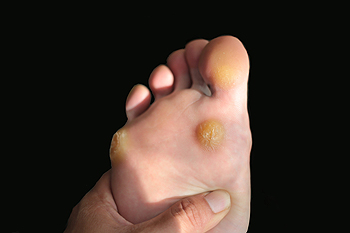 A corn on the foot appears as a small, hard circle which acts as a skin protector against pressure that poorly fitting shoes may cause. There are typically two types of corns that can develop. Hard corns are generally caused by shoes that fit tightly and appear on the side of the pinky toe. The toe and surrounding area may become inflamed from the added pressure, causing friction and aiding in the development of corns. Soft corns are known to develop in between the toes and thrive on the sweat and moisture in that area. Occasionally, soft corns may develop as a result of a predisposed inherited bone malformation, causing the skin on two toes to rub together, generating friction. Research has shown that wearing wider shoes while performing daily activities may prevent the formation of corns. If you are afflicted by this condition, please consider a consultation with a podiatrist for proper treatment options.
A corn on the foot appears as a small, hard circle which acts as a skin protector against pressure that poorly fitting shoes may cause. There are typically two types of corns that can develop. Hard corns are generally caused by shoes that fit tightly and appear on the side of the pinky toe. The toe and surrounding area may become inflamed from the added pressure, causing friction and aiding in the development of corns. Soft corns are known to develop in between the toes and thrive on the sweat and moisture in that area. Occasionally, soft corns may develop as a result of a predisposed inherited bone malformation, causing the skin on two toes to rub together, generating friction. Research has shown that wearing wider shoes while performing daily activities may prevent the formation of corns. If you are afflicted by this condition, please consider a consultation with a podiatrist for proper treatment options.
Corns can make walking very painful and should be treated immediately. If you have questions regarding your feet and ankles, contact Dr. Morris Stribling of Foot Care of Central San Antonio. Our doctor will treat your foot and ankle needs.
Corns: What are they? And how do you get rid of them?
Corns are thickened areas on the skin that can become painful. They are caused by excessive pressure and friction on the skin. Corns press into the deeper layers of the skin and are usually round in shape.
Ways to Prevent Corns
There are many ways to get rid of painful corns such as:
Treating Corns
Although most corns slowly disappear when the friction or pressure stops, this isn’t always the case. Consult with your podiatrist to determine the best treatment option for your case of corns.
If you have any questions please feel free to contact our office located in Central San Antonio, TX. We offer the newest diagnostic and treatment technologies for all your foot and ankle needs.
Read more about Corns: What Are They, and How Do You Get Rid of Them If standing for the majority of the day is part of your work routine, you may experience achy sensations in the feet, in addition to possible swelling and tingling. Feeling soreness in the feet may result in affecting your mood and emotional state, typically as a result of the discomfort felt from the irritation of the tendons, muscles, and joints. Relief can come from implementing appropriate exercises that will strengthen the feet. Acquiring proper knowledge is necessary in learning how to properly maintain correct patterns that will diminish foot pain as a result of standing. It’s beneficial to keep the joints loose and unlocked, in addition to shifting the body weight from one foot to the other. Additionally, getting regular foot massages will not only feel good, but will aid the feet in feeling better so the daily physical pressures of standing on your feet can be endured.
If standing for the majority of the day is part of your work routine, you may experience achy sensations in the feet, in addition to possible swelling and tingling. Feeling soreness in the feet may result in affecting your mood and emotional state, typically as a result of the discomfort felt from the irritation of the tendons, muscles, and joints. Relief can come from implementing appropriate exercises that will strengthen the feet. Acquiring proper knowledge is necessary in learning how to properly maintain correct patterns that will diminish foot pain as a result of standing. It’s beneficial to keep the joints loose and unlocked, in addition to shifting the body weight from one foot to the other. Additionally, getting regular foot massages will not only feel good, but will aid the feet in feeling better so the daily physical pressures of standing on your feet can be endured.
While working on the feet, it is important to take the proper care of them. For more information about working on your feet, contact Dr. Morris Stribling from Foot Care of Central San Antonio. Our doctor will treat your foot and ankle needs.
Working on Your Feet
Standing on your feet for long periods of time can cause stress and pain in your feet. Your whole body may experience change in terms of posture, back pain, bunions, callouses and or plantar warts. There are ways to avoid these conditions with proper foot care, smart choices and correct posture.
Positive Changes
Negative heeled shoe – Choosing this shoe type places the heel slightly lower than the ball of the foot. These are great for overall foot health. Find shoes that fit you correctly.
Go barefoot – Our feet were not designed to be enclosed for all hours of the day. Try to periodically expose your feet to air.
Eliminate Pain
Foot Exercises – Performing simple exercises, incorporating yoga and doing stretches are beneficial. This will allow increased blood flow to the area and muscles of the foot.
Achilles tendon – Stretching the foot out flat on the floor will relax the calf muscles and tendon. These exercises can be performed almost anywhere. Make sure you add these exercises to your daily regimen.
With a little bit of this information and knowing more about foot health, you will notice changes. Foot stretches and proper footwear will help with pain and prevent further issues.
If you have any questions please feel free to contact our office located in Central San Antonio, TX. We offer the newest diagnostic and treatment technologies for all your foot and ankle needs.
Read more about Working on Your Feet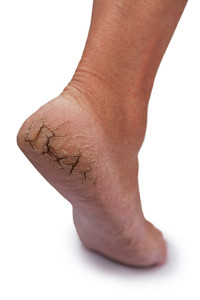 If your daily routine consists of standing the majority of the day, you may develop a condition referred to as cracked heels. There are several additional reasons why this ailment may occur, including wearing shoes that do not support the back of the foot, being overweight and requiring the feet to endure additional pressure, and skin conditions such as psoriasis and eczema. The cracks in the skin, also referred to as fissures, may become painful, which could make walking and standing difficult to manage. If your skin is dry, it’s beneficial to utilize a moisturizer to aid the skin in retaining moisture. Additionally, cracked heels may be a symptom of athlete’s foot, which can lead to an infection possibly occurring through the breaks in the skin. Please consult a podiatrist for additional information about cracked heels and possible treatment options.
If your daily routine consists of standing the majority of the day, you may develop a condition referred to as cracked heels. There are several additional reasons why this ailment may occur, including wearing shoes that do not support the back of the foot, being overweight and requiring the feet to endure additional pressure, and skin conditions such as psoriasis and eczema. The cracks in the skin, also referred to as fissures, may become painful, which could make walking and standing difficult to manage. If your skin is dry, it’s beneficial to utilize a moisturizer to aid the skin in retaining moisture. Additionally, cracked heels may be a symptom of athlete’s foot, which can lead to an infection possibly occurring through the breaks in the skin. Please consult a podiatrist for additional information about cracked heels and possible treatment options.
Cracked heels are unsightly and can cause further damage to your shoes and feet. If you have any concerns, contact Dr. Morris Stribling from Foot Care of Central San Antonio. Our doctor can provide the care you need to keep you pain-free and on your feet.
Cracked Heels
Cracked heels appear unappealing and can make it harder for you walk around in sandals. Aside from looking unpleasant, cracked heels can also tear stockings, socks, and wear out your shoes. There are several methods to help restore a cracked heel and prevent further damage.
How do you get them?
Dry skin is the number one culprit in creating cracked heels. Many athletes, walkers, joggers, and even swimmers suffer from cracked heels. Age and skin oil production play a role to getting cracked heels as well.
Promote Healing
Over the counter medicines can help, especially for those that need instant relief or who suffer from chronic dry feet.
Wear Socks – Wearing socks with medicated creams helps lock in moisture.
Moisturizers – Applying both day and night will help alleviate dryness which causes cracking.
Pumice Stones – These exfoliate and remove dead skin, which allows for smoother moisturizer application and better absorption into the skin.
Change in Diet
Eating healthy with a well-balanced diet will give the skin a fresh and radiant look. Your body responds to the kinds of food you ingest. Omega-3 fatty acids and zinc supplements can also revitalize skin tissue.
Most importantly, seek professional help if unsure how to proceed in treating cracked heels. A podiatrist will help you with any questions or information needed.
If you have any questions, please feel free to contact our office located in Central San Antonio, TX. We offer the newest diagnostic and treatment technologies for all your foot care needs.
Read more about Solutions for Cracked Heels Gout is considered to be a form of arthritis. The pain associated with an attack of gout is commonly described as severe and generally affects the big toe, possibly causing difficulty in walking. Crystals develop from the excess of uric acid produced by the body, and typically lodge in the joints of the big toe. Inflammation in the joints is a result of this build-up and this typically causes redness, swelling, and discomfort. There are several possible causes for this condition to occur including ingesting excess alcohol, drinking beverages that are high in sugar content, and consuming certain foods such as herring, sardines, or foods that are rich in yeast. Treatment options for gout attacks may include elevating the foot to reduce any swelling, or taking anti-inflammatory painkillers. If you are affected by this ailment, please consult with a podiatrist for additional information, and prevention techniques for gout.
Gout is considered to be a form of arthritis. The pain associated with an attack of gout is commonly described as severe and generally affects the big toe, possibly causing difficulty in walking. Crystals develop from the excess of uric acid produced by the body, and typically lodge in the joints of the big toe. Inflammation in the joints is a result of this build-up and this typically causes redness, swelling, and discomfort. There are several possible causes for this condition to occur including ingesting excess alcohol, drinking beverages that are high in sugar content, and consuming certain foods such as herring, sardines, or foods that are rich in yeast. Treatment options for gout attacks may include elevating the foot to reduce any swelling, or taking anti-inflammatory painkillers. If you are affected by this ailment, please consult with a podiatrist for additional information, and prevention techniques for gout.
Gout is a foot condition that requires certain treatment and care. If you are seeking treatment, contact Dr. Morris Stribling from Foot Care of Central San Antonio. Our doctor will treat your foot and ankle needs.
What is Gout?
Gout is a type of arthritis caused by a buildup of uric acid in the bloodstream. It often develops in the foot, especially the big toe area, although it can manifest in other parts of the body as well. Gout can make walking and standing very painful and is especially common in diabetics and the obese.
People typically get gout because of a poor diet. Genetic predisposition is also a factor. The children of parents who have had gout frequently have a chance of developing it themselves.
Gout can easily be identified by redness and inflammation of the big toe and the surrounding areas of the foot. Other symptoms include extreme fatigue, joint pain, and running high fevers. Sometimes corticosteroid drugs can be prescribed to treat gout, but the best way to combat this disease is to get more exercise and eat a better diet.
If you have any questions please feel free to contact our office located in Central San Antonio, TX. We offer the newest diagnostic and treatment technologies for all your foot and ankle needs.
Read more about Everything You Need to Know About Gout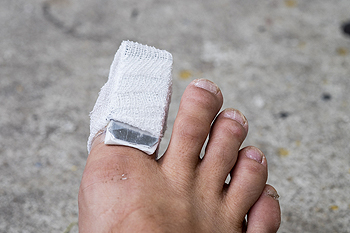 If you’ve broken your toe, the chances are favorable that your toe endured trauma, generally due to a heavy object falling on it or possibly stubbing it and causing it to jam. The two toes that most often experience a fracture are the pinky and the big toe. This seldom occurs in the other toes because they are protected by the toes next to them. One of the first signs of a broken toe may include pain and swelling, in addition to possible bruising in the affected toe and surrounding area. If the bone appears to be protruding, often occurring after a harsh fall, an X-ray may be necessary to determine the severity of the fracture. Treatment may consist of taping the toe to the one next to it or utilizing a splint for the affected toe. It’s suggested to consult with a podiatrist to learn more about symptoms and treatment options for a broken toe.
If you’ve broken your toe, the chances are favorable that your toe endured trauma, generally due to a heavy object falling on it or possibly stubbing it and causing it to jam. The two toes that most often experience a fracture are the pinky and the big toe. This seldom occurs in the other toes because they are protected by the toes next to them. One of the first signs of a broken toe may include pain and swelling, in addition to possible bruising in the affected toe and surrounding area. If the bone appears to be protruding, often occurring after a harsh fall, an X-ray may be necessary to determine the severity of the fracture. Treatment may consist of taping the toe to the one next to it or utilizing a splint for the affected toe. It’s suggested to consult with a podiatrist to learn more about symptoms and treatment options for a broken toe.
A broken toe can be very painful and lead to complications if not properly fixed. If you have any concerns about your feet, contact Dr. Morris Stribling from Foot Care of Central San Antonio. Our doctor will treat your foot and ankle needs.
What to Know About a Broken Toe
Although most people try to avoid foot trauma such as banging, stubbing, or dropping heavy objects on their feet, the unfortunate fact is that it is a common occurrence. Given the fact that toes are positioned in front of the feet, they typically sustain the brunt of such trauma. When trauma occurs to a toe, the result can be a painful break (fracture).
Symptoms of a Broken Toe
Generally, it is best to stay off of the injured toe with the affected foot elevated.
Severe toe fractures may be treated with a splint, cast, and in some cases, minor surgery. Due to its position and the pressure it endures with daily activity, future complications can occur if the big toe is not properly treated.
If you have any questions please feel free to contact our office located in Central San Antonio, TX. We offer the newest diagnostic and treatment technologies for all your foot and ankle needs.
Read more about What to Know About a Broken Toe Comfort is one of the most important things to look for when buying shoes, and comfort starts with measuring your feet correctly so proper shoes can be chosen for maximum support. There are several ailments that can occur from wearing shoes that fit poorly, which include blisters, cuts on the feet, and long-term injuries. Measuring the feet periodically will aid in choosing the correct size, and this can be done on a Brannock device which is typically found in shoe stores. An alternative to this tool is to measure the length and width of the foot on paper by tracing the outline of your foot. This may help you determine if a wider or narrower width is needed for optimum comfort. Please consider a consultation with a podiatrist for more information on how to determine your proper shoe size.
Comfort is one of the most important things to look for when buying shoes, and comfort starts with measuring your feet correctly so proper shoes can be chosen for maximum support. There are several ailments that can occur from wearing shoes that fit poorly, which include blisters, cuts on the feet, and long-term injuries. Measuring the feet periodically will aid in choosing the correct size, and this can be done on a Brannock device which is typically found in shoe stores. An alternative to this tool is to measure the length and width of the foot on paper by tracing the outline of your foot. This may help you determine if a wider or narrower width is needed for optimum comfort. Please consider a consultation with a podiatrist for more information on how to determine your proper shoe size.
Getting the right shoe size is an important part of proper foot health. Seek the assistance of Dr. Morris Stribling from Foot Care of Central San Antonio. Our doctor will provide the care you need to keep you pain-free and on your feet.
Getting the Right Shoe Size
There are many people who wear shoes that are the incorrect size, negatively affecting their feet and posture. Selecting the right shoes is not a difficult process, so long as you keep several things in mind when it comes to choosing the right pair.
As our feet hold our body weight and keep us moving, it is important to treat them right. Picking the right pair of shoes can provide your feet comfort and mobility without pain.
If you have any questions, please feel free to contact our office located in Central San Antonio, TX. We offer the newest diagnostic and treatment technologies for all your foot care needs.
Read more about Getting the Right Shoe Size: To Keep Your Feet HappyIf you have a toe that bends at the joint and points up, you may have what is referred to as a hammertoe. In severe cases where this affliction may affect everyday activities, surgery may be a viable option for relief. There are several different types of surgery that can be performed for the removal of one or more hammertoes. One type of surgery that is effective is referred to as a tendon transfer, and this is executed by pulling the tendon across the toe. This results in the toe becoming straighter. This may be beneficial, as it reduces pain and improves the appearance of the toe. Additionally, another type of surgery is known as a joint resection, and this is performed by possibly removing part of the bone and cutting the tendons and ligaments. If you are suffering from this condition, please schedule a consultation with a podiatrist to determine if surgery is appropriate for you.
Foot surgery is sometimes necessary to treat a foot ailment. To learn more, contact Dr. Morris Stribling of Foot Care of Central San Antonio. Our doctor will assist you with all of your foot and ankle needs.
When Is Surgery Necessary?
Foot and ankle surgery is generally reserved for cases in which less invasive, conservative procedures have failed to alleviate the problem. Some of the cases in which surgery may be necessary include:
What Types of Surgery Are There?
The type of surgery you receive will depend on the nature of the problem you have. Some of the possible surgeries include:
Benefits of Surgery
Although surgery is usually a last resort, it can provide more complete pain relief compared to non-surgical methods and may allow you to finally resume full activity.
Surgical techniques have also become increasingly sophisticated. Techniques like endoscopic surgery allow for smaller incisions and faster recovery times.
If you have any questions please feel free to contact our office located in Central San Antonio, TX. We offer the newest diagnostic and treatment technologies for all your foot and ankle needs.
Read more about Foot Surgery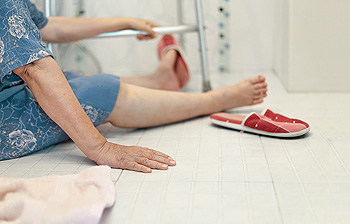 One of the best things we can do for our feet is choose shoes that fit comfortably. Recent research has shown that our feet get wider as we age, so it’s suggested to have the feet measured frequently. Additionally, it’s beneficial to avoid wearing high heels and shoes that fit tightly. Shoes may fit differently because the skin on the feet may lose elasticity and the nails may become brittle. It’s important to stay as active as possible to help poor circulation, which is a common ailment among seniors. Athlete’s foot is a commonplace among the elderly population and can cause considerable discomfort. Simple preventative measures include keeping the skin clean and drying thoroughly in between the toes, which is especially helpful. Diabetic patients need to be very aware of any sores that may appear. Consider scheduling a consultation with a podiatrist for correct treatment options on how to care for your feet.
One of the best things we can do for our feet is choose shoes that fit comfortably. Recent research has shown that our feet get wider as we age, so it’s suggested to have the feet measured frequently. Additionally, it’s beneficial to avoid wearing high heels and shoes that fit tightly. Shoes may fit differently because the skin on the feet may lose elasticity and the nails may become brittle. It’s important to stay as active as possible to help poor circulation, which is a common ailment among seniors. Athlete’s foot is a commonplace among the elderly population and can cause considerable discomfort. Simple preventative measures include keeping the skin clean and drying thoroughly in between the toes, which is especially helpful. Diabetic patients need to be very aware of any sores that may appear. Consider scheduling a consultation with a podiatrist for correct treatment options on how to care for your feet.
Proper foot care is something many older adults forget to consider. If you have any concerns about your feet and ankles, contact Dr. Morris Stribling from Foot Care of Central San Antonio. Our doctor can provide the care you need to keep you pain-free and on your feet.
The Elderly and their Feet
As we age we start to notice many changes in our body, but the elder population may not notice them right away. Medical conditions may prevent the elderly to take notice of their foot health right away. Poor vision is a lead contributor to not taking action for the elderly.
Common Conditions
Susceptible Infections
Diabetes and poor circulation can cause general loss of sensitivity over the years, turning a simple cut into a serious issue.
If you have any questions please feel free to contact our office located in Central San Antonio, TX. We offer the newest diagnostic and treatment technologies for all your foot and ankle needs.
Read more about Elderly and their Feet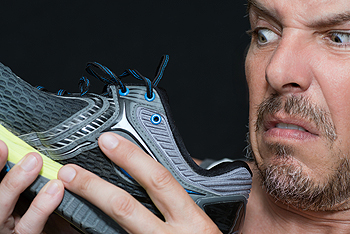 There are numerous sweat glands in the body, also known as eccrine glands. When these glands are overactive, excessive sweating can come from the feet, which is a condition known as plantar hyperhidrosis. Numerous side effects may often accompany this ailment because the skin is consistently moist. These may include scaling of the feet, especially in between the toes. Additionally, inflammation of the skin, blisters, and itchy feet are among the many conditions that can occur from hyperhidrosis. If the type of footwear that is worn includes insulated or waterproof shoes, the feet can produce an abnormal amount of sweat resulting in discomfort. It’s important to choose shoes that allows the feet to breath, and this will generally help to control any excessive sweating that may occur. A consultation with a podiatrist may be suggested for information and advice on how to control plantar hyperhidrosis.
There are numerous sweat glands in the body, also known as eccrine glands. When these glands are overactive, excessive sweating can come from the feet, which is a condition known as plantar hyperhidrosis. Numerous side effects may often accompany this ailment because the skin is consistently moist. These may include scaling of the feet, especially in between the toes. Additionally, inflammation of the skin, blisters, and itchy feet are among the many conditions that can occur from hyperhidrosis. If the type of footwear that is worn includes insulated or waterproof shoes, the feet can produce an abnormal amount of sweat resulting in discomfort. It’s important to choose shoes that allows the feet to breath, and this will generally help to control any excessive sweating that may occur. A consultation with a podiatrist may be suggested for information and advice on how to control plantar hyperhidrosis.
If you are suffering from hyperhidrosis contact Dr. Morris Stribling of Foot Care of Central San Antonio. Our doctor can provide the care you need to attend to all of your foot and ankle needs.
Hyperhidrosis of the Feet
Hyperhidrosis is a rare disorder that can cause people to have excessive sweating of their feet. This can usually occur all on its own without rigorous activity involved. People who suffer from hyperhidrosis may also experience sweaty palms.
Although it is said that sweating is a healthy process meant to cool down the body temperature and to maintain a proper internal temperature, hyperhidrosis may prove to be a huge hindrance on a person’s everyday life.
Plantar hyperhidrosis is considered to be the main form of hyperhidrosis. Secondary hyperhidrosis can refer to sweating that occurs in areas other than the feet or hands and armpits. Often this may be a sign of it being related to another medical condition such as menopause, hyperthyroidism and even Parkinson’s disease.
In order to alleviate this condition, it is important to see your doctor so that they may prescribe the necessary medications so that you can begin to live a normal life again. If this is left untreated, it is said that it will persist throughout an individual’s life.
A last resort approach would be surgery, but it is best to speak with your doctor to find out what may be the best treatment for you.
If you have any questions please feel free to contact our office located in San Antonio, TX. We offer the newest diagnostic and treatment technologies for all your foot and ankle needs.
Read more about Hyperhidrosis of the Feet